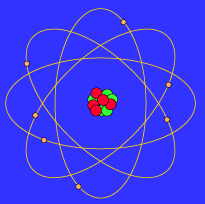Photo-oxidation - Photochromic Glass
Many people who wear eye glasses prefer those made with photochromic lenses or glass lenses which darken when exposed to bright light. These eyeglasses eliminate the need for sunglasses as they can reduce up to 80% of transmitted light. The basis of this change in color in response to light can be explained in terms of oxidation-reduction reactions. Glass consists of a complex matrix of silicates which is ordinarily transparent to visible light. In photochromic lenses, silver chloride (AgCl) and copper (I) chloride (CuCl) crystals are added during the manufacturing of the glass while it is in the molten state and these crystals become uniformly embedded in the glass as it solidifies. One characteristic of silver chloride is its suscepitibility to oxidation and reduction by light as described below.
Cl- -----------> Cl + e-
oxidation
Ag+ + e- -----------> Ag
reduction
The chloride ions are oxidized to produce chlorine atoms and an electron. The electron is then transferred to silver ions to produce silver atoms. These atoms cluster together and block the transmittance of light, causing the lenses to darken. This process occurs almost instantaneously. As the degree of "darkening" is dependent on the intensity of the light, these photochromic lenses are quite convenient and all but eliminate the need for an extra pair of sunglasses.
The photochromic process would not be useful unless it were reversible. The presence of copper (I) chloride reverses the darkening process in the following way. When the lenses are removed from light, the following reactions occur:
Cl + Cu+ ------> Cu+2 + Cl-
oxidizing agent reducing agent oxidized species reduced species
The chlorine atoms formed by the exposure to light are reduced by the copper ions, preventing their escape as gaseous atoms from the matrix. The copper (+1) ion is oxidized to produce copper (+2) ions, which then reacts with the silver atoms as shown.
Cu+2 + Ag ------> Cu+1 + Ag+
oxidizing agent reducing agent reduced species oxidized species
The net effect of these reactions is that the lenses become transparent again as the silver and chloride atoms are converted to their original oxidized and reduced states.
Subscribe to:
Post Comments (Atom)



No comments:
Post a Comment